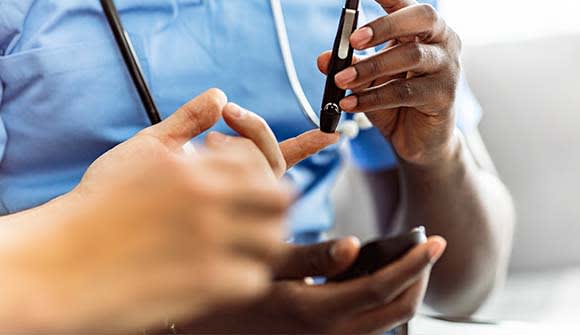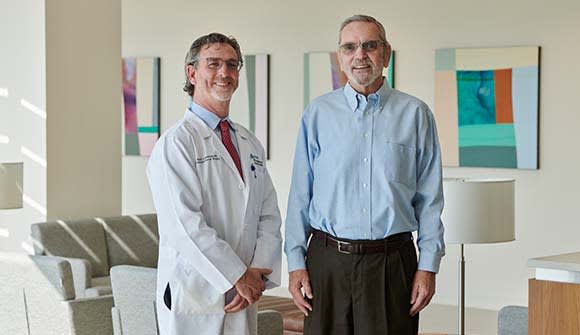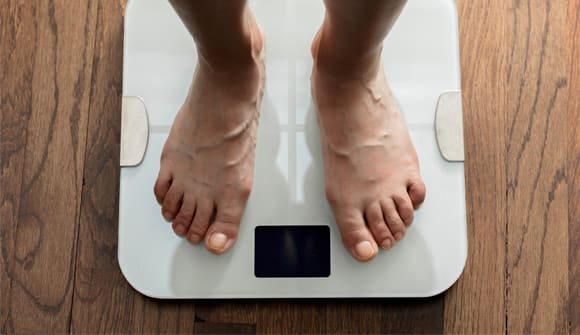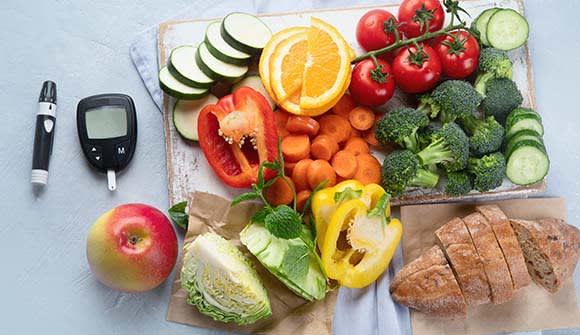Preventing diabetes
Why screenings are starting younger.
Article Date:

Certain people who are at risk for type 2 diabetes and prediabetes may be able to receive earlier screening for the disease. The United States Preventive Services Task Force (USPSTF) recently announced recommendations to lower the screening age for overweight and obese individuals from age 40 to 35.
According to the U.S. Centers for Disease Control and Prevention (CDC), roughly 34 million adults have diabetes, a condition in which the body doesn’t use insulin properly. More than one in three adults have prediabetes, which occurs when blood sugar levels are higher than normal but the body can still produce and respond to insulin. A person is considered to have prediabetes when an A1C (the test that measures average blood sugar levels) is greater than 5.7%, while diabetes is diagnosed at a reading of 6.5% or higher.
Diabetes is a risk factor for heart attacks and strokes, and the leading cause of blindness and kidney failure. It can also lead to limb amputations.
“Screening is important to catch prediabetes early before someone has any symptoms,” said Isaac Kinman, DO, a family physician with Baptist Primary Care. “Early detection can prevent it from worsening. The A1C test is quick and easy. We can do it in our office, and you don’t need to fast.”
Earlier screening may also be recommended for people of normal weight who have certain risk factors, including:
- Family history of diabetes
- Certain ethnic groups
- History of gestational diabetes
- Ovarian cysts, even if weight is normal
Check with your doctor for his or her screening recommendations.
Diabetic epidemic
“The reason for the lower recommended screening age is the epidemic we’re seeing with diabetes and obesity,” Dr. Kinman explained. “The most common risk factor we see is being overweight. As a culture, we’ve gotten away from exercising regularly and eating foods that grow out of the ground like people did 100 years ago.”
Plus, there’s a spike in the number of cases of prediabetes and diabetes in people around age 35.
“I see a new prediabetic patient every day and I diagnose new diabetes once or twice a week,” Dr. Kinman said. “Earlier testing can help detect prediabetes and give people a chance to change their habits, such as by eating healthier and exercising, so it doesn’t progress.”
The sugar factor
Often when people hear “diabetes,” they think sugar overload, but it's not that simple.
“Sugar does not cause diabetes. In fact, the brain needs glucose (blood sugar) to power the body. Insulin resistance is the issue. When glucose builds up, it can affect every part of the body, which jeopardizes the body’s ability to work correctly. Take the immune system, where, because of the increased glucose, infections cannot heal as well,” Dr. Kinman said. “Diabetes is caused by inflammation from a broken system. The question is, why is my body inflamed? I try to get to the root of this problem when I see my patients. The connection with obesity is that fat cells lead to more inflammation, which causes insulin resistance. Excess sugar then stays in the blood and causes damage throughout.”
Move your body
Some people are able to control their blood sugar levels with healthy eating and exercise, but others may need medication or insulin to manage it. No matter what, a little movement is good in any circumstance.
Ask yourself, what are some ways you can get out of the house? A good goal is 30 minutes of exercise five days a week, Dr. Kinman said. You could:
- Walk, hike, swim, dance, bike or row
- Go to the gym or check out group classes a few times a week
- Try a team sport like soccer or ultimate frisbee
- Track your steps with your phone, apps, watch or pedometer, with a goal of reaching 6,000 per day
Back to basics
Dr. Kinman tries to challenge patients to a plant-based diet for four weeks. But if that doesn’t work for you, you could:
- Increase consumption of fruits, vegetables, rice, quinoa, oats, beans and seeds
- Skip processed foods and avoid extra sugars and oils
- Opt for eggs, fish, turkey or chicken
- Only eat meat in moderation and make sure it’s lean and good quality
The good news is you can reverse your numbers.
“This year I had a patient with a hemoglobin A1C of 14% go on a plant-based diet and lose 40 pounds. His A1C is now in the normal range, and he no longer needs his medicine,” Dr. Kinman said. “You can make small changes and turn your life around.”
If you’re concerned about diabetes and want to get screened, make an appointment with a Baptist Primary Care physician near you by calling 904.202.4YOU or filling out this form. Your primary care physician can help guide you through the next steps.



